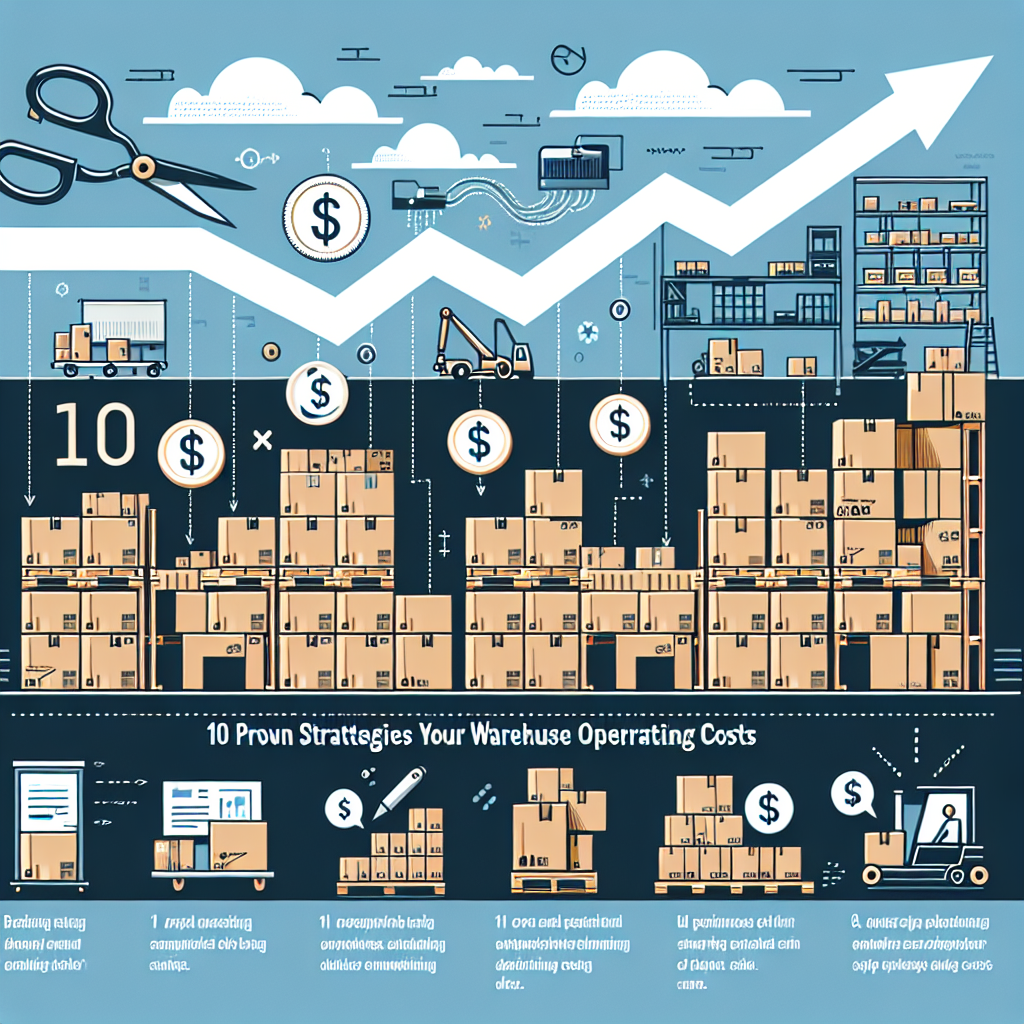Managing a warehouse is no small feat. As logistics demands increase, so do operating costs. However, with the right strategies and initiatives, you can significantly reduce expenses while maintaining operational efficiency. Here, we present ten proven strategies designed to help you slash your warehouse operating costs.
1. Embrace Automation
Automation is revolutionizing the warehouse industry, helping you save time and money. From robotic pickers to automated conveyor belts, integrating technology into your warehouse operations can streamline processes and reduce labor costs.
Why Automation Matters
By automating repetitive tasks, you not only reduce manual labor but also minimize human error. Investing in automation tools can result in higher accuracy and faster processing times, ultimately saving money.
2. Optimize Your Layout
The physical layout of your warehouse has a significant impact on efficiency. An optimized layout minimizes accidents and maximizes productivity.
Steps to Optimize
- Analyze your workflow: Understand product movement and adjust accordingly.
- Consider vertical space: Use taller shelving to increase storage without expanding the footprint.
- Create dedicated zones: Designate specific areas for receiving, storage, picking, and shipping.
3. Implement Inventory Management Systems
Inefficient inventory management can lead to excess stock or stockouts, both of which affect your bottom line. Adopting an inventory management system can help you track stock levels and forecast demand more accurately.
Benefits of Technology
A well-implemented system allows for better decision-making, ensuring you only order what you need when you need it. This reduces carrying costs and enhances your cash flow.
4. Conduct Regular Audits
Regular audits can unveil inefficiencies and discrepancies in your warehouse operations. By consistently reviewing your processes, you can identify areas for improvement.
Audit Checklist
- Review inventory levels and turnover rates.
- Check for damaged or obsolete stock.
- Analyze labor efficiency and workflows.
5. Train Your Workforce
A well-trained workforce is key to reducing errors and improving efficiency. Investing in employee training can translate into lower operating costs and higher productivity.
Focus Areas for Training
- Safety protocols: Reduce workplace accidents.
- Equipment operation: Minimize damage to machinery and inventory.
- Efficiency practices: Teach employees best practices for speed and accuracy.
6. Leverage Cross-Docking Strategies
Cross-docking involves unloading goods from an inbound vehicle and loading them directly onto outbound vehicles, with minimal or no storage in between. This strategy can significantly reduce storage costs.
Implementing Cross-Docking
To leverage this strategy:
- Ensure your warehouse layout supports efficient transfers.
- Collaborate closely with suppliers and carriers for effective scheduling.
7. Optimize Energy Use
Energy consumption is a significant component of warehouse operating costs. By optimizing energy use, you can cut utility bills and enhance sustainability.
Energy-Saving Tips
- Use LED lighting: They consume less energy and have longer lifespans.
- Implement smart thermostats: Monitor and control heating and cooling systems efficiently.
- Invest in energy-efficient equipment: Look for machinery that uses less power.
8. Foster Strong Supplier Relationships
Strong relationships with suppliers can lead to better pricing and terms, directly affecting your costs. Consistent communication and collaboration can pave the way for mutual benefits.
How to Build Relationships
- Schedule regular check-ins and updates.
- Discuss your needs and challenges openly.
- Explore bulk purchasing or long-term contracts for better rates.
9. Adopt Lean Principles
Lean principles focus on minimizing waste while maximizing productivity. By applying these concepts, you can create a culture of continuous improvement in your warehouse.
Steps to Go Lean
- Identify waste in processes, including time, materials, and labor.
- Engage employees in brainstorming sessions to identify potential improvements.
- Implement changes gradually and measure their impact.
10. Regularly Review Costs and KPIs
Continuous improvement is key to maintaining a cost-effective warehouse. Regularly reviewing your costs and key performance indicators (KPIs) helps you stay informed about your financial health.
Essential KPIs to Monitor
- Inventory turnover rate
- Order accuracy rate
- Labor productivity
- Storage costs
Conclusion
Reducing warehouse operating costs doesn’t have to be an overwhelming task. By employing these ten proven strategies, you can streamline your operations, improve efficiency, and ultimately enhance your profitability. Remember, the goal is to create a warehouse environment that not only cuts costs but also supports growth and efficiency. Start implementing these strategies today, and watch your operating costs decline while your productivity flourishes.


